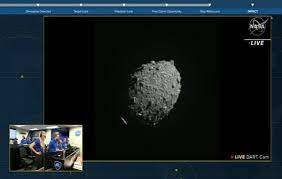
Breaking News
 The Leaked Documents They Never Wanted You to See, And They're REAL!
The Leaked Documents They Never Wanted You to See, And They're REAL!
 Head of FDA Says Biden Administration Hid Data On Heart Risks From COVID Vaccines
Head of FDA Says Biden Administration Hid Data On Heart Risks From COVID Vaccines
 Where Is Your Line In The Sand On Digital ID?
Where Is Your Line In The Sand On Digital ID?
Top Tech News
 This tiny dev board is packed with features for ambitious makers
This tiny dev board is packed with features for ambitious makers
 Scientists Discover Gel to Regrow Tooth Enamel
Scientists Discover Gel to Regrow Tooth Enamel
 Vitamin C and Dandelion Root Killing Cancer Cells -- as Former CDC Director Calls for COVID-19...
Vitamin C and Dandelion Root Killing Cancer Cells -- as Former CDC Director Calls for COVID-19...
 Galactic Brain: US firm plans space-based data centers, power grid to challenge China
Galactic Brain: US firm plans space-based data centers, power grid to challenge China
 A microbial cleanup for glyphosate just earned a patent. Here's why that matters
A microbial cleanup for glyphosate just earned a patent. Here's why that matters
 Japan Breaks Internet Speed Record with 5 Million Times Faster Data Transfer
Japan Breaks Internet Speed Record with 5 Million Times Faster Data Transfer
 Advanced Propulsion Resources Part 1 of 2
Advanced Propulsion Resources Part 1 of 2
 PulsarFusion a forward-thinking UK aerospace company, is pushing the boundaries of space travel...
PulsarFusion a forward-thinking UK aerospace company, is pushing the boundaries of space travel...
 Dinky little laser box throws big-screen entertainment from inches away
Dinky little laser box throws big-screen entertainment from inches away
 'World's first' sodium-ion flashlight shines bright even at -40 ºF
'World's first' sodium-ion flashlight shines bright even at -40 ºF
Watch NASA's DART spacecraft hit 'bullseye' by smashing into an asteroid

NASA's asteroid smashing spacecraft completed its spectacular doomed attack on a distant asteroid last night, and we already have three awe-inspiring videos of the event.
The Double Asteroid Redirection Test (DART) spacecraft collided with the 7 million mile (11 million kilometer) distant asteroid Dimorphos at 7:14 p.m. ET on Monday (Sept. 26) in humanity's first attempt to alter an asteroid's trajectory.
DART recorded and beamed back its final moments with its onboard Didymos Reconnaissance and Asteroid Camera for Optical Navigation (DRACO), which was also responsible for automatically navigating the spacecraft onto its collision course. As DART came ever closer to the space rock, its camera feed showed the asteroid's landscape bloom from a single pale gray pixel to a rough and craggy terrain strewn with sharp, shadowy rocks.
"We saw that we were going to impact. This asteroid was coming into the field of view for the first time. We really had no idea what to expect," Elena Adams, a mission systems and the spacecraft systems engineer for the DART mission, said at a news conference (opens in new tab) after the event. "All of us were kind of holding our breaths."

 Infinite Money Glitch
Infinite Money Glitch


